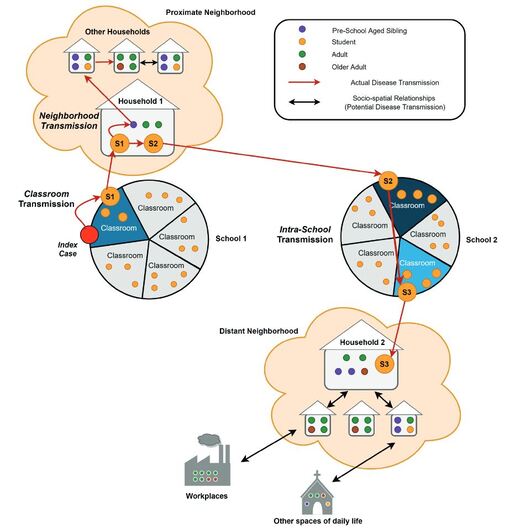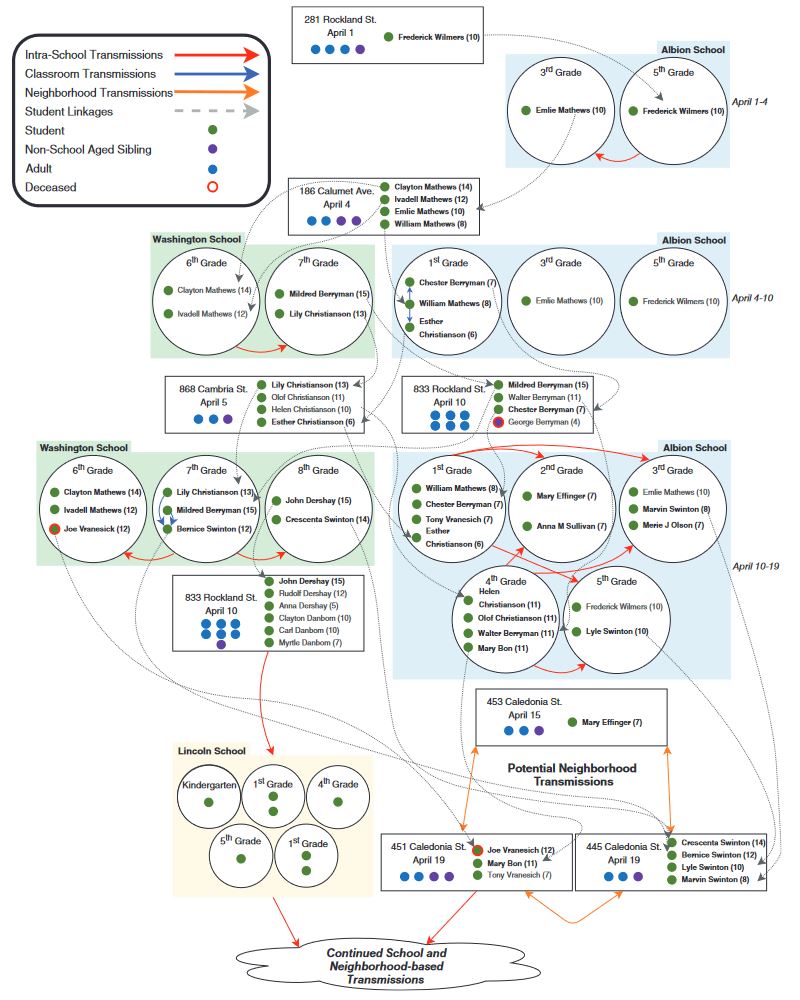|
During our current pandemic, we all have had a lot of concerns about how COVID-19 is transmitted from person to person. One area we do not know a lot about is how the coronavirus disease is transmitted between school children in their day-to-day lives. To begin to answer these questions, researchers from Michigan Tech's Historical Environments Spatial Analytics Lab and the Keweenaw Time Traveler project have recently published a paper entitled, Schools as Vectors of Infectious Disease Transmission during the 1918 Influenza Pandemic. Conceptual contact network with schools as primary vectors for disease transmission This study integrated three types of historical micro-data with a spatially–temporally linked Historical Geographic Information Systems (HGIS) known as the Copper Country Historical Spatial Data Infrastructure (CC-HSDI). The CC-HSDI (also known as the Keweenaw Time Traveler) is built on temporally accurate Sanborn Fire Insurance Plans linking built, social, and environmental variables from 1880 to 1950. The paper utilizes a number of big historical, spatial datasets embedded with the Keweenaw Time Traveler to map and presents a novel model of ways that infectious disease evidently traveled through three schools in Calumet and Laurium during the 1918 influenza pandemic. The study highlights the utility of using historical microdata from the Integrated Public Use Microdata Series (IPUMS), which is data at the finest, non-aggregated level of precision. Together with HGIS to overcome challenges other studies have had in tracing historical pandemics. Microdata-generated spatio-temporal patterns of disease transmission in schools during the 1918 pandemic The results are a quasi-contact tracing method that highlights the key role that schools play as vectors of infectious disease transmission. By utilizing historical big data, like that found in the Keweenaw Time Traveler, we can inform present day models that aim to combat our most infectious diseases, such as COVID-19 and others.
0 Comments
Leave a Reply. |
|


 RSS Feed
RSS Feed



